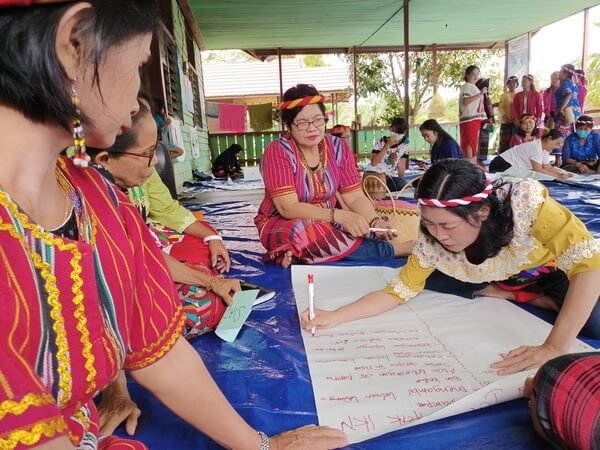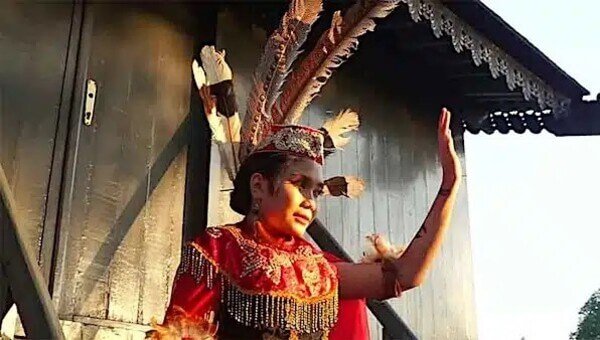Nestled deep within the heart of Borneo, the Dayak people of East Kalimantan represent a rich and vibrant culture that has thrived for centuries. These indigenous groups, known for their deep connection to the forest and nature, have lived in harmony with the land long before modern development transformed the island.
As the traditional guardians of Kalimantan's lush rainforests, the Dayak people hold the knowledge, customs, and stories of one of the world’s most ecologically significant regions.
A Diverse Heritage
The term "Dayak" does not refer to a single group, but rather encompasses a wide range of indigenous tribes that inhabit the interior regions of Borneo. In East Kalimantan alone, there are numerous sub-groups, each with its own language, customs, and traditions. Among these, the Kenyah, Kayan, and Bahau people are some of the most prominent.
Despite the diversity among Dayak tribes, they share common threads in their deep spiritual connection to the land. Many tribes practice animism, believing that spirits inhabit the forests, rivers, and mountains. This belief system has shaped how the Dayak live and engage with their environment, fostering a culture of sustainability and respect for natural resources.
Longhouses: The Heart of Dayak Communities
One of the most iconic aspects of Dayak culture is the longhouse (locally known as rumah panjang).
These massive wooden structures, often built on stilts, serve as communal homes for multiple families within the same tribe. Longhouses are not just residences; they are the center of Dayak social life, where ceremonies, storytelling, and daily activities take place. Built from wood sourced from the surrounding forests, these homes are a testament to the Dayak's expert craftsmanship and their harmonious relationship with nature.
Traditional Practices and Spirituality
The Dayak people have long been custodians of East Kalimantan’s forests. Their traditional farming techniques, like swidden agriculture (slash-and-burn), are designed to work with the natural cycles of the forest, allowing the land to regenerate. This practice is a sustainable approach when done on a small scale, providing the Dayak with the resources they need without degrading the forest over time.
Central to Dayak spirituality are rituals and ceremonie* that mark key life events such as birth, marriage, and death, as well as agricultural cycles. The most famous of these is the **Tiwah ceremony**, a secondary funeral ritual practiced by the Dayak Ngaju tribe, in which the bones of the deceased are exhumed, purified, and placed in a special structure called a *sandung*. This ceremony is a vital part of Dayak belief in the journey of the soul to the afterlife.
Craftsmanship and Art
Dayak artistry is world-renowned for its intricacy and symbolism. From the weaving of textiles to the carving of wooden totems and tattoos, the Dayak express their connection to nature and their ancestors through their craftsmanship. One of the most famous Dayak symbols is the hornbill, a bird revered for its beauty and its role as a messenger between the human world and the spiritual realm. You can find images of the hornbill in Dayak carvings, tapestries, and even traditional tattoos.
Speaking of tattoos, the Dayak are known for their elaborate body art, which historically represented one’s accomplishments, status, and tribal affiliations. These tattoos, often done with natural dyes, hold deep cultural significance and are seen as protective symbols.
Challenges and the Fight for Their Land
While the Dayak have long lived in balance with their environment, modern challenges have put their way of life at risk. Deforestation, driven by logging, palm oil plantations, and mining, threatens the forests they rely on for survival. The encroachment of modern industry not only disrupts their environment but also poses a threat to their culture and traditions. This is particularly true as the new Indonesian capital will be located in Kalimantan
In recent decades, the Dayak have become increasingly involved in activism, fighting to protect their ancestral lands from exploitation. Many Dayak leaders are vocal advocates for environmental conservation, seeking to preserve both their cultural heritage and the rich biodiversity of the Borneo rainforest. Their fight is not only for themselves but for the health of one of the world’s last great rainforests.
Dayak Legacy in a Changing World
Today, as the world grapples with the challenges of climate change and environmental degradation, there is much to learn from the Dayak people. Their time-tested practices of sustainable living offer insights into how we can harmonize with nature rather than dominate it.
Despite the pressures of modernization, many Dayak communities have held onto their traditional ways while also adapting to the changing times.
Some have opened their doors to eco-tourism, inviting visitors to experience their way of life, witness their customs, and learn about the importance of preserving the forest.
The Dayak people's connection to East Kalimantan is a testament to the enduring power of indigenous knowledge. As stewards of the land for generations, their voices are crucial in the global conversation about sustainability, conservation, and the future of our planet.
A Culture Worth Preserving
The Dayak people are not just an important part of East Kalimantan's past; they are vital to its future. As they continue their fight to protect their land and traditions, their story serves as a reminder of the importance of preserving indigenous cultures and their invaluable contributions to environmental stewardship.
In a world increasingly disconnected from nature, the Dayak of East Kalimantan offer a living example of how to live in harmony with the earth. As we face growing environmental challenges, their wisdom and practices provide a path forward—one that respects the land, celebrates diversity, and fosters sustainability for generations to come.





